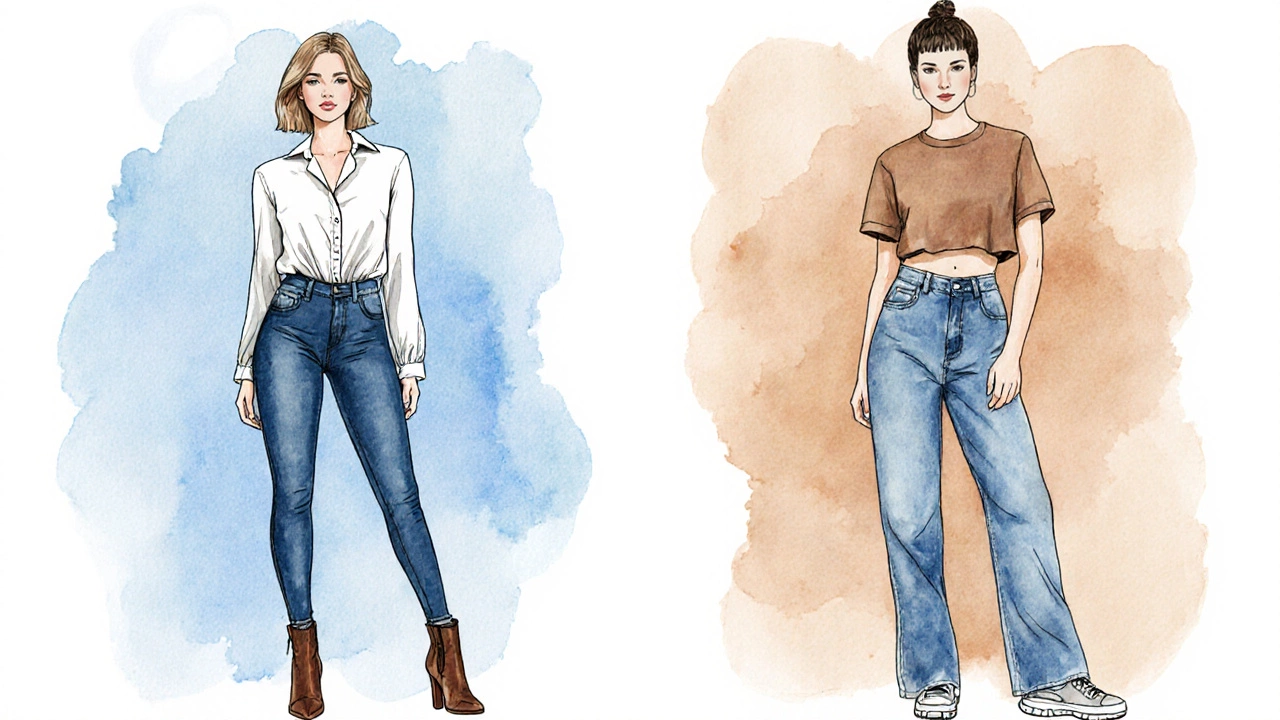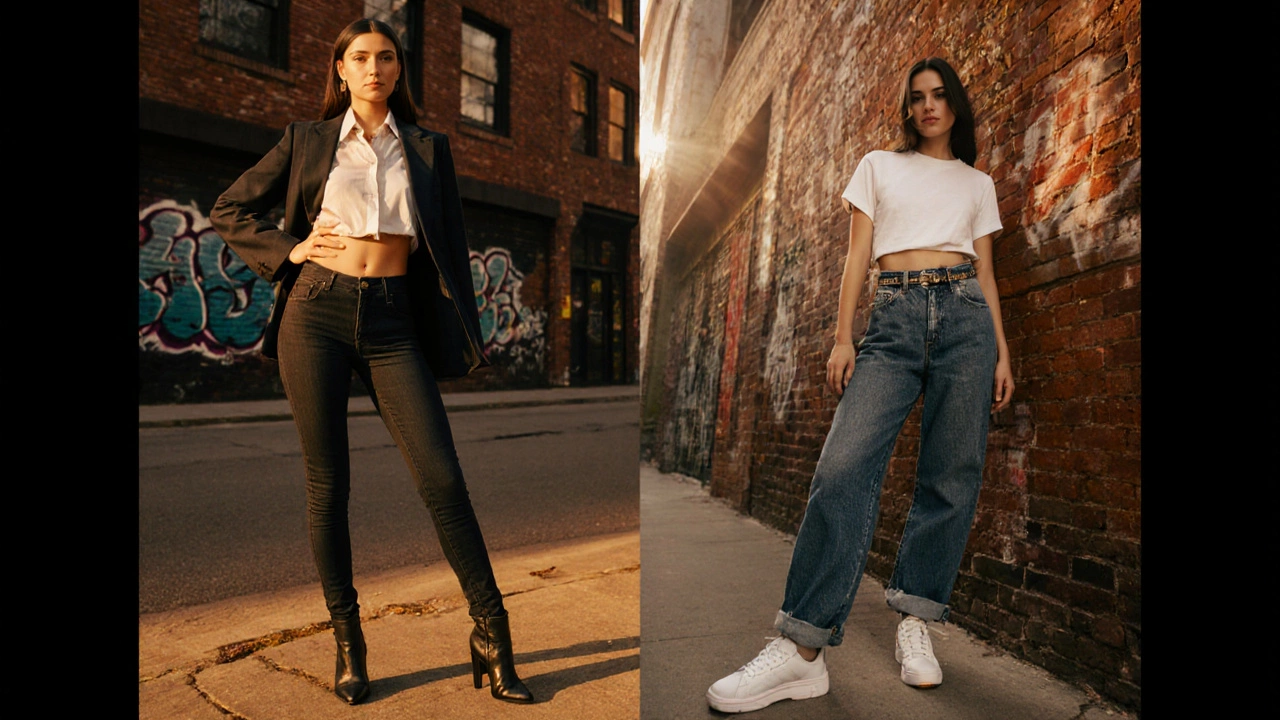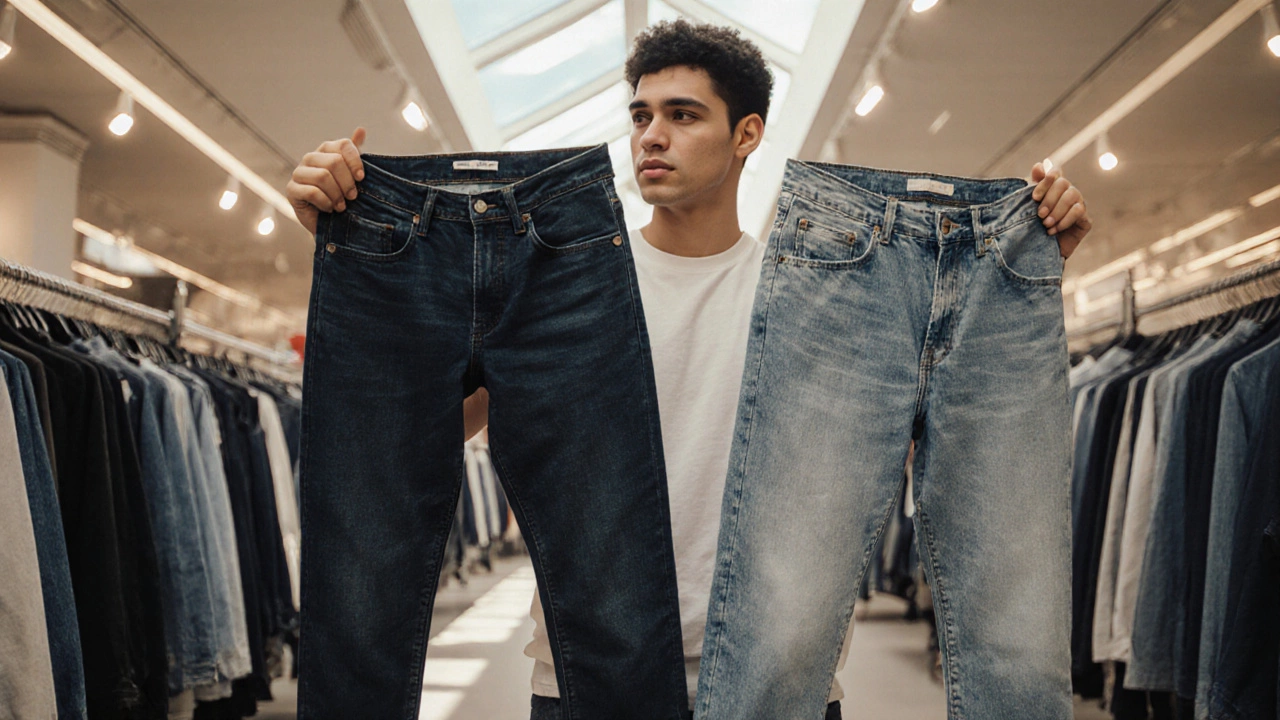Jeans Fit Selector
Tight Jeans
Body-hugging, tapered fit that flatters hourglass and pear shapes.
Loose Jeans
Relaxed, comfortable fit that works for athletic, apple, and tall figures.
Select your preferences and click "Find My Perfect Fit" to get personalized recommendations.
When you’re standing in front of the denim aisle, the biggest head‑scratch is whether to grab the skinny, body‑hugging pair or the relaxed, breezy cut. The answer isn’t a one‑size‑fits‑all rule; it hinges on body shape, lifestyle, and what you want your outfit to say.
Quick Takeaways
- Skinny or tight jeans flatter straight‑legged or hourglass bodies and are great for polished looks.
- Loose, relaxed jeans add comfort and work well for athletic, pear, or casual street‑style wardrobes.
- Consider fabric weight: lighter denim drapes better on tighter fits, while heavyweight denim supports loose cuts.
- Mix‑and‑match: a fitted top with loose denim creates balanced proportions, and vice‑versa.
- Check the rise and inseam - they affect how the fit looks on different heights.
What "Tight" and "Loose" Really Mean
Jeans are a staple made from denim, a cotton twill woven in a diagonal pattern that gives the fabric its strength and texture. Within that category, a tight fit hugs the hips, thighs, and calves, often tapering down to a narrow ankle. A loose fit sits more loosely around the hips and legs, sometimes flaring out at the ankle or staying straight.
How Your Body Shape Guides the Choice
Understanding your body shape is the first step. Here’s a quick match‑up:
- Hourglass or pear: Tight jeans accentuate the waist and streamline hips. Choose a mid‑rise to avoid a muffin top.
- Apple or rectangular: Loose jeans can balance a larger midsection while adding volume to the lower body. Look for high‑rise cuts to elongate the torso.
- Athletic or muscular: Loose denim offers room for thigh muscles and prevents the “pinch” feeling that tight denim can cause.

Comfort, Mobility, and Lifestyle
If you’ve ever felt your calves digging into a skinny pair after a long day, you know comfort matters more than a trend. Tight denim works best when you’re mostly seated or moving minimally-think office, dinner, or a night out. Loose denim shines for active days: walking, biking, or casual weekends.
Fabric weight also plays a role. Light‑weight denim (around 8‑10oz) bends easily and feels smoother on the skin, making it ideal for tighter silhouettes. Heavy‑weight denim (12‑14oz) holds shape better, which is why it’s a favorite for relaxed, raw‑edge styles.
Current Trends and Styling Tips
Today’s fashion trend leans toward a mix of extremes. Street style influencers pair oversized, loose denim with fitted tops, while runway shows still showcase ultra‑skinny silhouettes for an avant‑garde vibe.
How to style each:
- Tight jeans: Pair with a tucked‑in blouse or a cropped jacket to highlight the waist. Finish with heeled ankle boots for a sleek line.
- Loose jeans: Wear a fitted tee or a cropped sweater. Add a belt to define the hips if you want shape. Sneakers or chunky boots complete the relaxed look.
Side‑by‑Side Comparison
| Attribute | Tight Fit | Loose Fit |
|---|---|---|
| Silhouette | Body‑hugging, tapered | Relaxed, straight or flared |
| Best Body Types | Hourglass, pear | Apple, athletic, tall |
| Comfort Level | Medium-low (depends on stretch) | High, especially for movement |
| Styling Flexibility | Works with dressy tops, heels | Great with tees, sneakers, layered looks |
| Trend Popularity 2025 | Steady, niche runway | Rising, streetwear dominant |
| Fabric Preference | Light‑weight with stretch | Medium-heavy denim |

Buying Checklist - What to Look For
- Rise: Low, mid, or high - choose what elongates your torso.
- Inseam: Measure your leg length; a cropped cut can look intentional or sloppy.
- Fabric composition: Aim for at least 2% elastane if you want stretch in tight fits.
- Wash: Dark indigo is slimming; light or distressed washes add a casual vibe.
- Construction: Look for reinforced stitching at the waistband and pockets for durability.
Troubleshooting Common Issues
Too tight and no stretch? Try a denim blend with 3‑5% spandex; it adds give without losing the denim look.
Loose jeans bunch at the ankle? Choose a tapered leg or add a cuff to control the width.
Mid‑rise feels uncomfortable? Switch to a high‑rise for extra coverage; it also helps smooth the belly area.
Frequently Asked Questions
Do tight jeans work for taller people?
Yes, as long as you pick the right inseam. A longer leg length combined with a mid‑ or high‑rise prevents the silhouette from looking chopped off.
Can I wear loose jeans in a professional setting?
It depends on your office dress code. Choose a dark wash, minimal distress, and pair with a structured blazer and simple shoes to keep the look polished.
How often should I wash denim?
Most denim experts recommend washing after 5‑10 wears to preserve color and fit. Spot‑clean stains in between washes.
Is there a rule for pairing shoes with tight vs loose jeans?
Tight jeans look sleek with heels, loafers, or sleek sneakers. Loose jeans pair best with chunky sneakers, boots, or sandals that add proportion.
What’s the best denim weight for each fit?
Light‑weight (8‑10oz) works well for tight, stretchy cuts. Medium‑to‑heavy (12‑14oz) holds shape for loose, relaxed silhouettes.

